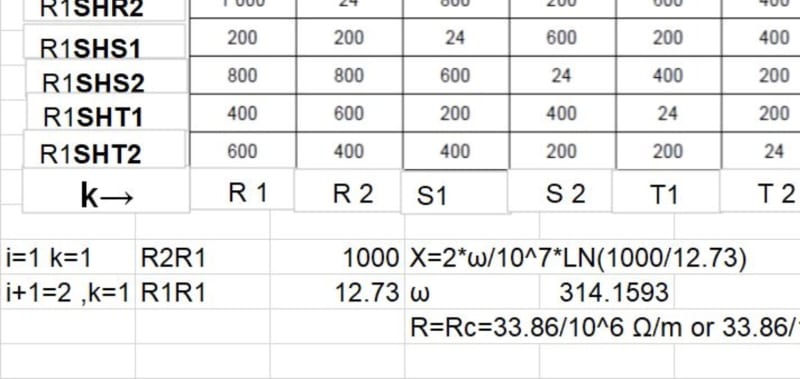The author of the standard does not explain why the reactance is so calculated.
However, if we take other publication like EPRI EL-5036-V4 Appendix A
the voltage of A phase will be
EAn=Ia1(RA1+jXA1)+IA2(jXA1-A2)+IB1*(jXA1-B1)...+IA(RL+jXL) where:
RA1=A1conductor resistance
XA1=A1conductor self reactance=LA1*0.023/1000*(K'+LN(1/rc))
XA1-A2 =mutual reactance A1-A2=LA1*0.023/1000*(LN(1/DA1-A2))
rc= conductor radius[inches]
We can write (K'+LN(1/rc))=LN(1/α/rc) and if K’=0.25 (K'+LN(1/rc))= 0.687468
and (1/α/rc)=exp(0.687468)= 1.988674 and α=0.7788 for solid conductor.
For 127 wires then α*rc=32.8/2*0.776=12.73 mm.
For sheath-since it is not a stranded wires conductor no need α then- the distance will be 48/2=24
EA1n=IA1(RA1+jXA1)+IA2(jXA1-A2)+IB1*(jXA1-B1)...+IA(RL+jXL) for conductor A1
EA2n=IA2(RA2+jXA2)+IA1(jXA1-A2)+IB1*(jXA2-B1)...+IA(RL+jXL) for conductor A2
But EA1n=EA2n then EA1n-EA2n=0
0=IA1(RA1+jXA1-jXA1-A2)-IA2(RA2+jXA2-jXA1-A2)+IB1[(jXA1-B1)+j(XA2-B1)]....
(RA1+jXA1-jXA1-A2)=RA1+jK*LN(1/(α*rc)-jK*LN(1/DA1-A2)
if for i=1 and k=1 we put α*rc and for i=i+1=2 k=1 we put DA1-A2 then we get Xi,k=K*LN(DA1-A2/(α*rc))
then on pos.1 we get RA1+j*K*ln(1000/12.72) where K=2*ω/10^7.



